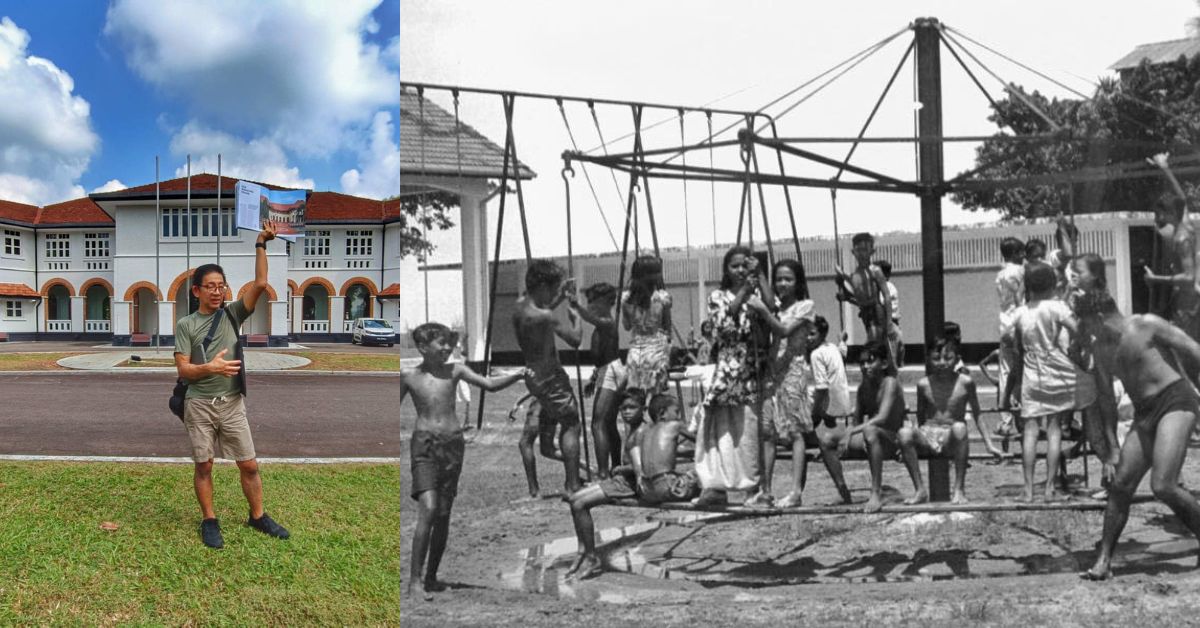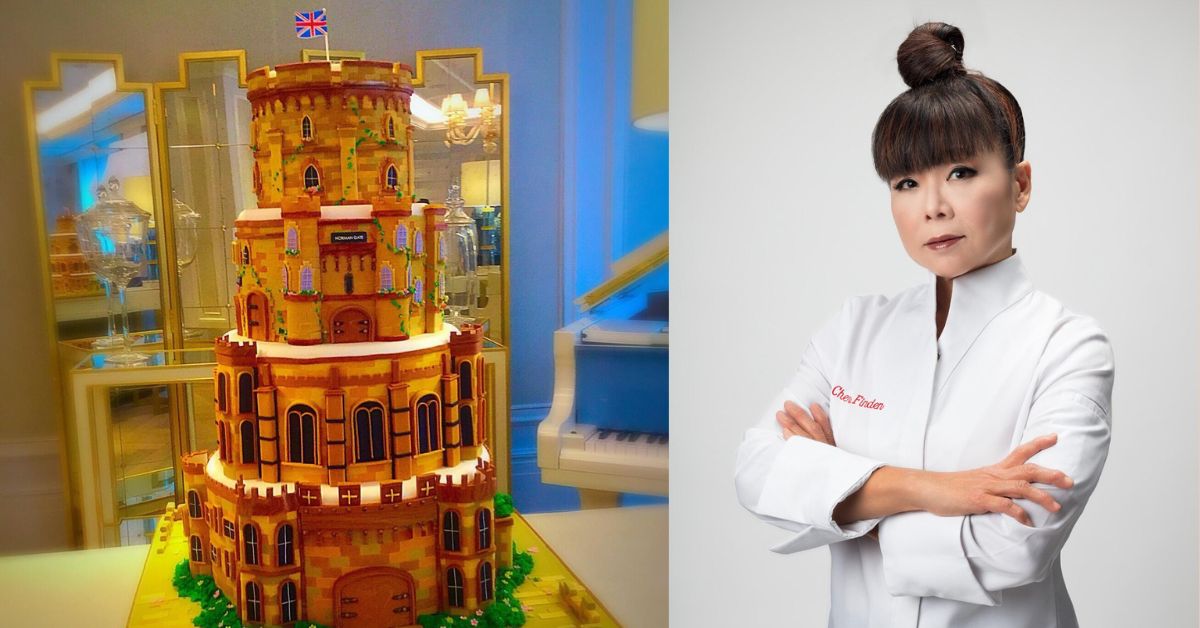
Jerome Lim has made a hobby out of chronicling what he calls “his Singapore” on his blog The Long and Winding Road – less a reference to the popular Beatles song of the same name, and more a collection of “people, places, events, words and images that have left an impression” on the silver across the decades.
Though a naval architect by training and trade, the 60-year-old has shown his skill in uncovering stories and retelling them in intimate, loving detail.
His recollections of Singapore heritage have clearly struck a chord with Singaporeans, as he’s managed to grow an ardent following on his blog (and almost 70,000 Facebook followers on a similarly named Facebook page) in the decade and a half since he started.
Along the way, he’s put his findings to paper in books like Uncommon Ground: The Places You Know, The Stories You Don’t and Secret Singapore (which he co-wrote with travel writer Heidi Sarna).
His contributions to the body of research about Singapore’s history have been significant enough to warrant attention from the likes of the National Heritage Board (NHB), Singapore Land Authority (SLA) and Urban Redevelopment Authority (URA), who charged the licensed tour guide with the task of curating tours and exhibitions delving into forgotten titbits of the country’s history.
Advertisement

These range from deep dives into well-known spots like the historic Rail Corridor, to unearthing hidden nuggets from a bygone era – such as the tale of Singapore’s oldest surviving lift on 5 Kadayanallur Street.
Read on to find out how a proud “child of the 60s and 70s” was inspired to turn memories from his childhood into Singapore heritage stories that are captivating multiple generations of people here.
Jerome Lim's journey to blogging
Jerome’s first step down the path to becoming an “accidental blogger” came in 2007, during a sojourn to Penang for a naval job abroad.
It felt like I had gone through a time warp into a Singapore 30 years back. There were so many similarities between the architecture there and what we had in Singapore when I was a child,
he says.
"It got me thinking about the country in the 60s and 70s during my childhood."
It was a very different Singapore then. We had no skyscrapers, but a lot of kampongs. We had no supermarkets, but a lot of street markets. The hustle and bustle of the shophouses and the streets back then – it was very messy, very chaotic, but very organic in a way,
he reminisces.

Image Courtesy of Jerome Lim
So, the blog to me was really a way of finding my Singapore and putting things down as I remember it before it's lost forever,
he says.
"It was more a repository of memories – it wasn’t meant to be a very public or serious thing, though as it started to grow, I just went along with it."
Jerome Lim: Stories of places come first
According to Jerome, his knack for tying stories to historical locations was cultivated during weekend travels with his late father.
He would bring us around to Changi or Kallang and for every place we'd go to, he'd have an interesting story to tell. So that interest in the stories of places was imparted in me, and when it came to my turn to connecting the dots between places and people, I've always stuck to telling stories.
Describes Jerome,
He returned to Singapore in 2008, where he began to write in earnest. An early story that particularly resonated with his readers was one of his childhood in Toa Payoh, recalling the buzz when the late Queen Elizabeth II famously visited a viewing gallery on the rooftop of Block 53, Toa Payoh Lorong 5.

Image Courtesy of Jerome Lim
Then came the news that the Tanjong Pagar Keretapi Tanah Melayu (KTM) Railway Station and the tracks and land connecting it to Malaysia – now known as the Rail Corridor – would be returned to Singapore in a land swop, with the railway ceasing operations for good in the area and moving to Woodlands.
It was something all of us grew up with. We had some family friends in Jalan Teck Whye, and I can recall having to pass by the railway crossing on the way to meet them – so we’d have to stop the car and wait for the trains to pass,
he reminisces.
I had an auntie who stayed at Spottiswoode Park right across from the train station, and when we visited her to eat dinner together, I would hear the horn blaring every time at 9pm. It was signalling that the night train to Kuala Lumpur was about to leave, but for us, it meant time to go home (laughs),
he adds.

Image Courtesy of Jerome Lim
But more than that, the Rail Corridor also holds a special place in Jerome’s heart due to the part it played in his love life.
My girlfriend then – now my wife – was residing in Kuala Lumpur. So I would go up one week, she would come down one week – this lasted for a few years, even after we married,
he describes.
Armed with this personal connection, Jerome documented the events leading up to the railway station’s final closure, peppering his stories with heartfelt anecdotes of railway staff and other findings.
Meaningful conservation
For Jerome, stories are the gulf between “meaningful conservation” and conservation for its own sake – a hot topic in Singapore, where renovations and renewal are a daily reality.
In Singapore, land is scarce. There’s always a pressing need to keep developing, to tear down old buildings for more HDB flats. The concerns for the population are manifold,
he says.
"But as we develop and demolish these old spaces, we lose places that have meaning to us, we lose places that are familiar to us – and these are what makes home, home."
Change will come – when can we ever stop change? – but we need to have a hard think about how we do it. And the government, to its credit, has been engaging a lot more with voices like ours over the years,
he adds.
Even so, with conflicting demands from all sides, not every building that’s conserved retains its essence, Jerome says. An example he gives is the former Kapal Di Raja (Malay for royal ship) Malaya naval base located off Admiralty Road West, where the Art Deco-inspired administrative block, a stone rubble wall and twin stairways were preserved – but little else.
The administrative block was flanked by a set of buildings, in front of a parade square. What made it really interesting was when you viewed it from one end of the parade square, the profile resembled a ship’s deck, with the flagpole acting as the ship's mast,
he describes.
"But by preserving the building in isolation, all of that history is lost."

Image Courtesy of Jerome Lim
On the other hand, he points to Chinatown as an example where he feels conservation and gentrification are in balance.
They managed to keep all of the character, the charm, and the energy of the area, even though it's been modernised and gentrified,
he says.
Past, present and future
As someone contributing to Singapore’s collective history, Jerome feels that the past – warts and all – should be worthy to chronicle, whether in written form on a blog such as his, or as a work of art.
Sometimes, people can get too worked up about history. It’s historically accurate that samsui women smoked then. And what's wrong with depicting someone as young, and coming to Singapore with the hope of conquering the world? It was the artist’s interpretation of how things were.
Referring to the recent furore over the mural of the samsui woman – which the URA said promotes smoking and was decried online as being too sensual – he says,

Image Courtesy of Jerome Lim
On his part, he also wishes to capture more of this history – nuanced, compelling and unsanitary as it may sometimes be – in Singapore and especially, in our neighbouring countries of Malaysia and Indonesia as he enters his golden years.
After all, writing on his blog, for him, is as much a way to remember the past as it is to look to the future.
I do not think I'm just reminiscing. I recall memories about a forgotten time and track its evolution to today. That’s what heritage is – connecting the dots between past, present and future.
He says,





